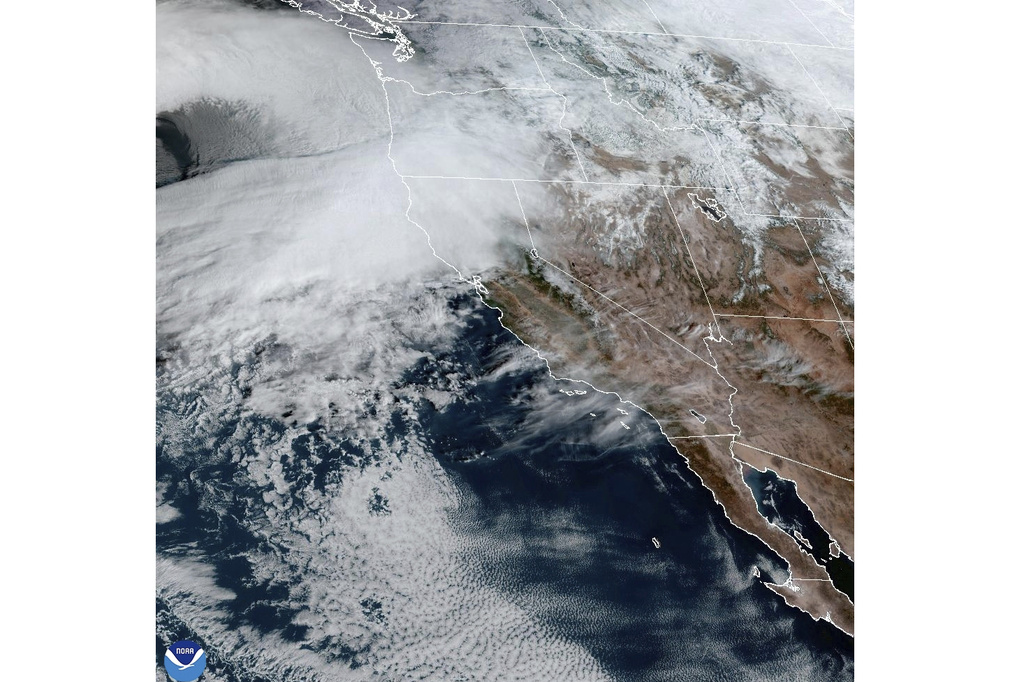Understanding Bomb Cyclones: Causes and Effects Explained \ Newslooks \ Washington DC \ Mary Sidiqi \ Evening Edition \ A bomb cyclone is threatening the West Coast with severe weather conditions, including torrential rainfall, hazardous winds, and potential flash flooding. Known scientifically as bombogenesis, this phenomenon occurs when a storm rapidly intensifies due to a dramatic drop in atmospheric pressure, often caused by cold and warm air masses colliding. The ongoing storm, fueled by an atmospheric river, is expected to cause significant disruptions across northern California and the Pacific Northwest.
Bomb Cyclone: Quick Looks
- Definition: A bomb cyclone forms when a storm intensifies rapidly, marked by a sharp drop in atmospheric pressure.
- Process: Caused by warm and cold air masses colliding, often over ocean waters.
- Current Storm: Severe rainfall, hazardous winds, flash flooding, and power outages predicted for the West Coast.
- Global Patterns: Bomb cyclones can occur worldwide, in oceans like the Northwest Pacific and North Atlantic.
- Past Events: Recent examples include Hurricane Milton (2023) and severe U.S. storms in 2018 and 2022.
Deep Look
What Is a Bomb Cyclone?
Bomb cyclones occur in the mid-latitudes, regions between the tropics and polar areas, where atmospheric conditions allow warm and cold air masses to collide. This interaction often takes place over ocean waters, where the warm, moist air from tropical regions meets the cold, dense air descending from the polar zones. When these contrasting air masses interact, the resulting cyclone can rapidly intensify, leading to the phenomenon known as a bomb cyclone.
Meteorologists use barometric pressure readings, measured in millibars, to classify storms. According to Stephen Baron, a forecaster with the National Weather Service (NWS) in Gray, Maine, bombogenesis is frequently observed during hurricanes and Nor’easters, two storm types known for their destructive potential.
Why Is This Bomb Cyclone Happening on the West Coast?
While bomb cyclones are not unique to the West Coast, the region’s exposure to atmospheric rivers makes it particularly vulnerable to storms of this nature. These weather patterns can transport vast amounts of water vapor, amplifying the storm’s intensity and increasing the risk of flooding and wind damage.
What Conditions Could It Bring?
Communities across the West Coast should prepare for several dangerous weather conditions associated with this bomb cyclone:
- Torrential Rainfall: Widespread rain may lead to flash flooding, particularly in low-lying or poorly drained areas.
- Hazardous Winds: High wind watches are in effect, with gusts strong enough to knock down trees, damage buildings, and cause power outages.
- Winter Storms in Higher Elevations: Mountain regions are likely to see heavy snow, creating treacherous conditions for travelers.
- Travel Disruptions: Slick roads, reduced visibility, and debris are expected to make travel hazardous throughout the region.
Historical Context of Bomb Cyclones
Bomb cyclones are not a new phenomenon but have become more widely recognized in recent years, thanks in part to social media and increased public interest in extreme weather events.
One of the most recent examples was Hurricane Milton in 2023, which made landfall in Florida as a Category 3 hurricane. Before reaching the coast, Milton underwent bombogenesis, intensifying rapidly and causing widespread damage.
In 2022, another bomb cyclone delivered extreme cold and dangerous weather conditions across much of the United States, illustrating the phenomenon’s ability to impact large swaths of the country.
Why Are Bomb Cyclones Feared?
- Rapid Intensification: Bomb cyclones can develop within hours, catching many regions off guard.
- Wide-Ranging Impact: From coastal flooding to mountain snow, bomb cyclones affect diverse terrains simultaneously.
- Powerful Winds: Wind gusts during a bomb cyclone can rival those of hurricanes, leading to widespread damage.
Understanding Bomb Understanding Bomb Understanding Bomb







